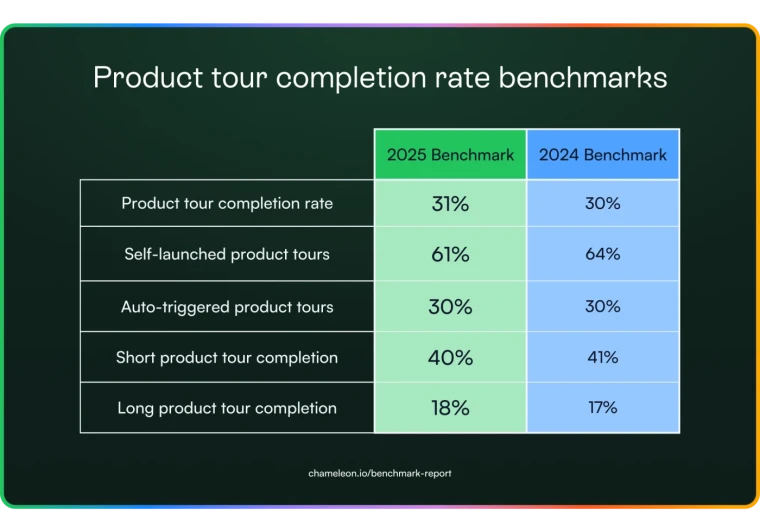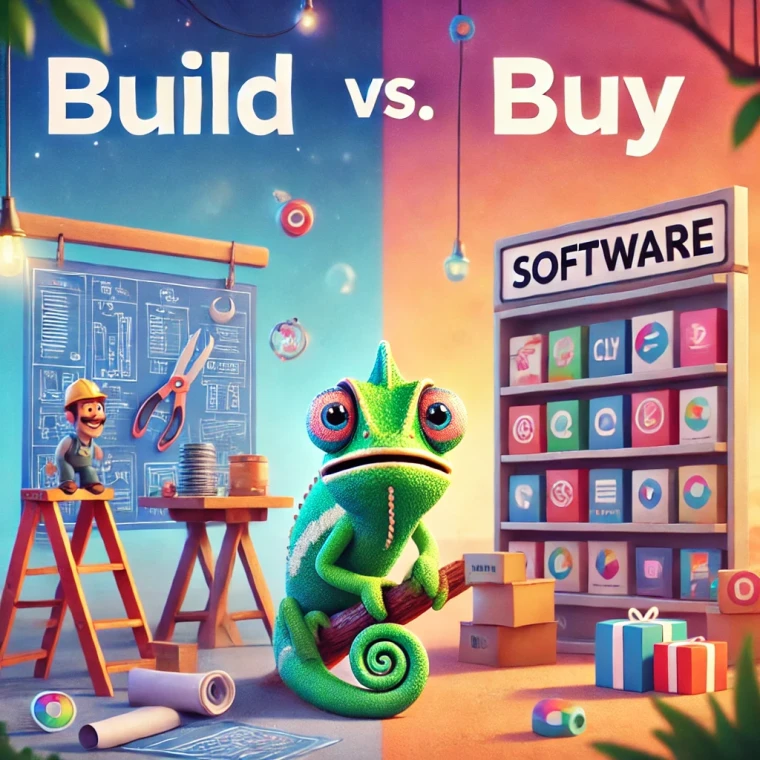Let’s paint the scene. You’re part of a SaaS product team. You’ve built this incredible product; it’s gone through rigorous user tests and finessed to answer the needs of your customer. It launched with a brilliant (and rather costly) marketing campaign. The customers are rolling in—and rolling right back out again. They’re not even staying for the welcome drinks.
Why, why, why? You’ve done everything right. Your product's value proposition is exactly what users asked for—you even got the fancy cocktail umbrellas for their onboarding drinks that everyone told you they love. But after that first taste, they head out. What’s not adding up?
The answer is “Time to Value.” It's the one hurdle that stands between you and getting more customers. It's a key metric to watch if your goal is to retain customers and have lower churn. In this article, we’ll guide you through the different kinds of time to value, why it should be a core metric your product team measures, and share some examples of those doing it best.
The aim of the game, is to have your customers hang around throughout their onboarding. It’s to have them making their own drinks, inviting their friends, and loving every minute of the product world you’ve created.
What is Time to Value (TTV)?
Time to value (TTV) is the time it takes a customer to realize the value they were expecting of your product. Among SaaS companies, the value realization moment is also referred to as the “aha moment”. The shorter the time frame is to reach value, the more likely you are to retain a user and avoid customer churn.
The TTV timeframe starts running the moment someone purchases your product until the moment they benefit from your product. Although a TTV goal should sound something like “the shorter, the better,” your product may be limited on how short this can realistically be.
For example, if your product is something that revolves around email, a benefit can most likely be seen from day one. However, if your product revolves around closing out the tax year, and someone buys your product in September, you will have very different barriers against you.
Either way, the sooner you can provide initial value, the better. Even if you’re restricted by product seasonality, you’ll need to find other ways to provide value.
The difference between TTV and the “aha moment”
You’ll often hear TTV and the “aha moment” referred to in the same context as they work alongside each other. The time to value is the period of time it takes a customer to understand the value of your product to them—their “aha moment”.
The reason we emphasize “their” is because the “aha moment” belongs to the user. It’s not necessarily something that you personally, or you as a business, consider. It’s when your product matches the user’s expectations. A lot can be said for your pre-sales product messaging for you and a customer to determine the same “aha moment”.
In more complex products, or products that evolve over time, there may be multiple “aha moments” during the customer experience. Each could have a different TTV.
To sum it up, the “aha moment” is the differentiating factor between a passive and active user—it helps define your customers' success. The TTV is simply the time that is taken to get there.
Different types of TTV
There are various kinds of time to value. So far, we’ve really only been referring to “Time to Basic Value”. What we should probably stress here is that different kinds of TTV have different customer to business-based benefit—not all of which revolve around churn and customer retention rates.
Time to Basic Value
Time to Basic Value (TTBV) is the amount of time it takes a new customer to see a very early stage of value when using your product. This is usually the hook that gets potential customers to hang around longer and entices them with ideas of what greater value you can provide in the future.
Going back to our welcome drinks example at the beginning of this article. Your product’s basic value can be realized when new customers enjoy that first cocktail. It’s what sends them to the bar to explore (and potentially pay for) what more you have on offer. TTBV is the appetizer that’s often offered in your X-day free trial and helps make freemium models work. Show value fast, and you’ll get users to hang around and spend more.

Improving Freemium Conversion: From “Aha” to MRR
We'll email you this on-demand webinar—learn how to encourage free users to become lifelong happy customers.
Time to Exceed Value
Exceeding customer expectations is a surefire way to not only prove your product's full value, but go beyond it. It convinces users that your product's features are absolutely must-haves.
Time to Exceed Value (TTEV) is the amount of time it takes a customer to exceed an “aha moment” and discover a new level of value they didn’t know your product provided. It’s fantastic to get this in by the end of a trial period, as it can help improve free trial conversion rates.
However, Time to Exceed Value can also come later in your product life cycle and can be a metric that helps to carve out brand ambassadors, increase lifetime value (LTV), aid your referral program—if you don’t have one yet, we need to have words—and generate lasting relationships with your customers.
Immediate Time to Value
Immediate Time to Value refers to the value someone can find in your product, or brand, rapidly. When we say rapid here, we mean with a Usain Bolt kind of speed.
This time to value is often best accompanied without a sign-up or other barriers to entry. It’s a tool to show your product’s capabilities and entice a user to sign up or want more from you. A great example of this is the Moz: Link Explorer tool. It drives customer adoption even before the customer signs up.

Another example is the Idealista: Mortgage Calculator.

This time to value will often play on one of Cialdini’s Principles of Persuasion; can you guess which one? We’ll hide the answer later in the article, just to keep you on your toes. Essentially, immediate time to value provides customer success in a few clicks.
Short Time to Value
Often best symbolized by a service. You have a problem, you find and hire the solution, it takes effect in a short period, and you both walk away happy. Short Time to Value is excellent in showcasing what you do. However, you have to ensure that someone wants more from you once you’ve provided that value. Think about how you can keep that person wanting more.
Long Time to Value
Long Time to Value is tricky to handle. There can be a few reasons your product has a longer TTV, and that's not necessarily a bad thing. A longer customer journey could develop deeper understanding and better customer retention than when value is discovered only after short or immediate time. However, that's not to say you may run into customer frustrations if they've paid for a service or product they can't see a value from within a reasonable amount of time.
Even if your product is only supposed to be used once a year, you may still struggle to show value throughout the year as your product seemingly lays dormant, collecting data, and doing its thing for when the user needs it.
In another example, it can also depend on the buyer. Perhaps the buyer is slow to go through your onboarding process and doesn’t integrate their other resources as they should. This isn’t necessarily your fault… Or is it? Could you have done a better job at user onboarding? We’ll get there.
How you can measure time to value
We've mentioned that TTV starts the moment the customer decides to purchase or use the product. While it sounds simple, it can still be tricky when it comes to exactly measuring time to value, but here are some ways you can get started with.
Time to conversion
Generally it is understood that once a customer reaches value realization, that is when they are likely to commit to the product. In other words, it is the moment when they go from free trial to paying for your SaaS product.
So one possibility is that the time it takes for a customer to go from trying your product to actually buying as the time to value.
Time to feature adoption
Another way of looking at it is examining how long it takes for a certain core feature to be adopted by the customer.
For instance, how long does it take for the user to start actually using the new feature when it is introduced?
Time to ROI
Every customer starts with an objective in mind. This could be increase in revenue, reduction in churn, or improving customer experience for their own clients. Whatever it is, the moment that it is achieved is when value is certain. So this is another option for measuring time to value.
Ask your customers
You can also just ask your customers how long it took for them to discover value. This can be done in a quick survey or even an interview by your customer success manager. Of course, these can be imperfect measures as your customers aren't timing themselves with a watch. But it can give you a general sense of how long your customers took to get to value.
Why Time to Value is so important in user onboarding
Time to value is obviously an important metric. But it is particularly important for user onboarding. Here are two main reasons why.
Better conversion
Your user onboarding process is your opportunity to minimize time to various levels of value. Plus, successful user onboarding is often the key differentiator between you and your competition.
When you improve your TTV metrics, you essentially improve onboarding by shortening that process. The faster your customers find value within your product, the more likely they will go from the free trial to the paid version.
Customers see ROI faster
When you have short TTV, that means your new customers will see value fairly quickly. That kind of quick ROI is great, because it makes your customers more likely to stick with you and not go towards a competitor. That kind of customer satisfaction can even set you up for long term relationships with your customers.
And this is especially if your product is on the top end of someone's SaaS expenses, you'll be under a magnifying glass by various budget police within a business. It means you need internal ambassadors to fight your corner, champion your product, and showcase your value to the rest of the company. If your product gives your customers fast ROI, then there won't be a shortage of promoters on your side.
How to shorten your Time to Value
You can shorten your time to value a few ways, and most of them revolve around using some great onboarding tactics. Let’s take a look at some of our favorite examples.
Onboarding Tours with Moz

What can we say? Moz knows what they’re doing. With their product tour for new users, they’re not only hoping to get their users to an “aha moment” quickly. They’re hoping to exceed that and hit a time to exceed value goal by delivering positive and surprising news within their tour, which doesn't just drive conversion, but increases their customer lifetime value.
Tooltips with Sendgrid

Sendgrid is working toward a long time to value by using tooltips to introduce new features. In fact, Sendgrid relies on the previous value they’ve already provided their users to upsell new features, keep users engaged, and build positive working relationships.
Omnichannel messaging with Moment

Customer onboarding doesn’t have to, and shouldn’t, stop at in-app messaging. We’ve done the research, and omnichannel messaging for user onboarding is way more effective and inclusive of your customers.
This onboarding email example above from Moment is one worth noting. Moment prides itself on being the “Marketplace for Creatives.” When someone joins that marketplace, they want to know they’re in the right place and that these guys know their stuff. Moment’s onboarding emails deliver creative tips, showcasing the value of being part of their community fast while encouraging people to use their product more.
Customer success support with VideoAsk

Customer success comes through great support, and it’s essential that a CS platform is part of your user onboarding stack. Even the smoothest of onboardings are going to trigger questions and hopefully spark some inspiration. You need to be ready to answer and support those ideas as quickly and efficiently as possible.
How you do that is up to you. However, Typeform has created a nifty tool called VideoAsk that allows customer success managers to give personalized onboarding and customer support.
Keep cutting TTV down
Let us paint the scene one last time. Our cocktail party is drawing to a close. You did it. You beat the traffic and arrived on time looking fabulous. You’ve sampled our drinks, boogied a little, met some new people, and are now settled very comfortably on the sofa in the lobby with a cup of coffee and some nibbles leftover from the all you can eat buffet. You’re waiting for your Uber to roll up outside. You are content.
This is how you want your customers' experience to end, feeling like they've had a good time. That they got what they expected from the moment they walked in and are walking away with more than they expected, knowing they'll be back soon. This is what customer satisfaction looks like.
TTV is a metric all SaaS products should be tracking. It's one you should always be trying to optimize and better your competition at. Work with your customer success manager and focus on shortening your TTV. In doing so, you'll beat churn, build relationships, and sell more—be it through referrals or upsells. Hopefully, in this article, we've managed to provide a few “aha moments” along the way.






